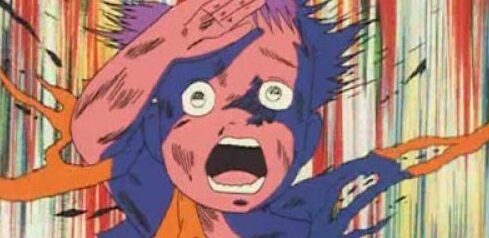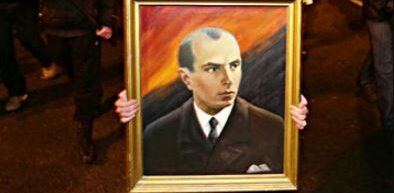Barefoot Gen & the Shadow Project
August 6, 2014 marks the 69th anniversary of the U.S. atomic bombings of Hiroshima and Nagasaki. On Aug. 6, 1945 the U.S. dropped an atomic bomb on Hiroshima, killing an estimated 140,000 people in the blink of an eye. Three days later, Aug. 9, 1945, the U.S. obliterated the Japanese port city of Nagasaki with another atomic bomb, killing an estimated 70,000.
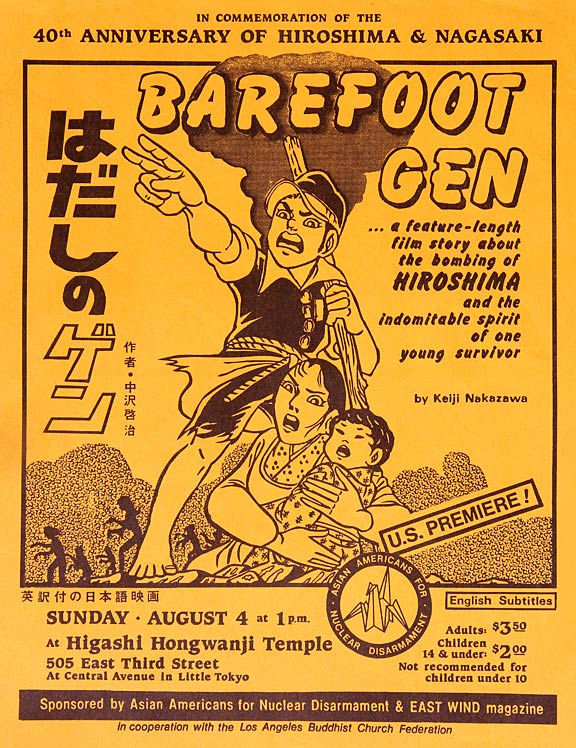
In 1985 I marked the 40th anniversary of the atomic bombings by attending an extraordinary August 4th event at the Buddhist Higashi Hongwanji Temple in the historic Little Tokyo district of Los Angeles. Asian Americans for Nuclear Disarmament, East Wind magazine, and the Los Angeles Buddhist Church Federation had organized the U.S. premiere screening of the 1983 animated film Hadashi no Gen (Barefoot Gen).
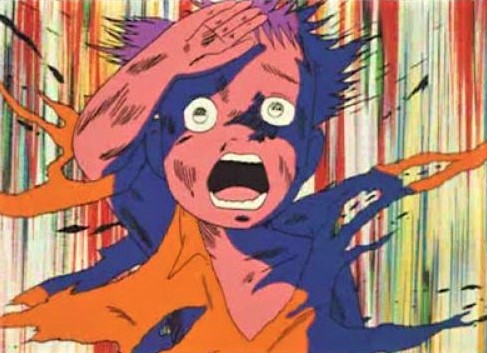
Based on the biographical manga by artist Keiji Nakazawa, the animated film tells the story of the atomic bombing of Hiroshima as seen through the eyes of a six-year old boy named Gen. A multicultural crowd of over 100 people gathered at the L.A. Buddhist Temple to view the English subtitled film. You can view a clip of Hadashi no Gen here.
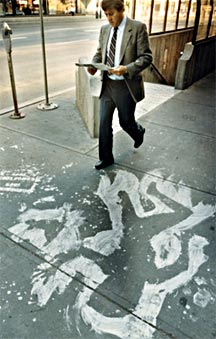
On the actual 40th anniversary date of August 6, 1985, Americans from coast to coast woke up to find that the streets and sidewalks of their cities had been painted with the eerie ash-white silhouettes of men, women, and children. The political street art had been organized by a mostly anonymous coalition of artists calling themselves the “International Shadow Project 1985.” The outlines symbolized those vaporized Japanese whose shadows were burned into stone by the atomic bombs at Hiroshima and Nagasaki.
Shadow Project organizers called on dissident artists to only use water-soluble paint when creating the outlines. With buckets of whitewash and stencils cut into life-sized human shapes, some 100 artists and activists in Los Angeles worked before sunrise to furtively paint more than 1,200 silhouettes all across L.A., it was especially poignant to see the shadows painted on the sidewalks of the city’s Little Tokyo district. From New York to Oregon, thousands of artists painted the silhouettes on sidewalks; nationally, 104 people were arrested for painting the ghostly outlines in public places. Shadow Project actions took place in 250 communities worldwide.
Ugly tensions are mounting as the 69th anniversary of the U.S. atomic bombings are observed. From Ukraine to Gaza the smells of explosives and burned flesh are in the air as the entire world lurches towards war. According to the Center for Nonproliferation Studies, by 2018 President Obama will have spent $179 billion on maintaining the U.S. stockpile of nuclear weapons – and the costs are likely to grow. In the present day it is difficult to find any evidence that the International Shadow Project ever existed. Today’s artists are overwhelmingly quiescent, and the only “shadows” to speak of belong to the rapidly disappearing “peace movement.”
— // —
Sources used in this article:
United Press International – Aug. 7, 1985 “Shadows drawn on Bay Area streets.”
L.A. Times. Aug. 7, 1985 “3,000 in L.A. Protest Threat of Nuclear War.”
Edmonton Journal. Aug. 6, 1985 “Streets bear grim plea for peace.“


